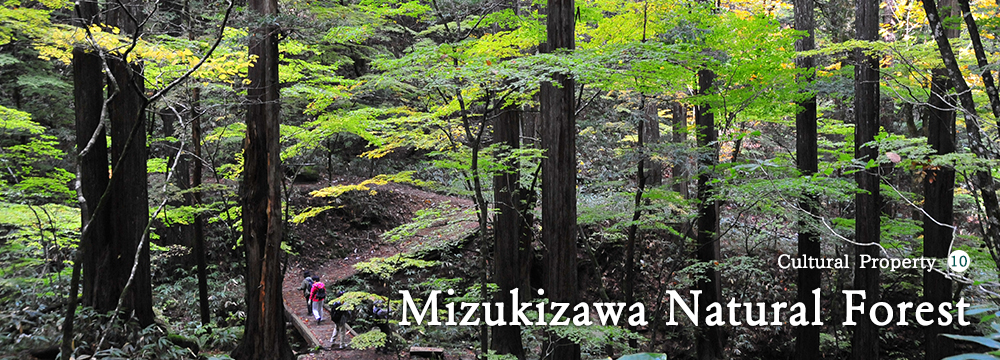
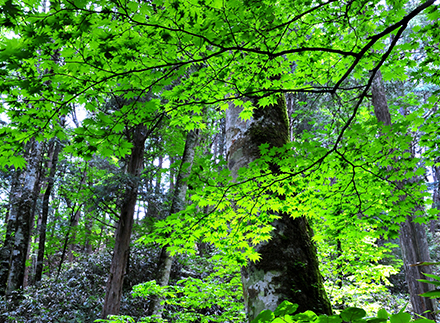
Story
In the Edo period, vast amounts of trees in the Kiso mountains were cut down for building castles and castle towns. Seeds from the scarcely remaining trees formed the current forest. The forest is a mixture of conifer and broad-leaf trees, such as 550-year-old large sawara cypress, over 300-year-old hinoki cypress, beech, mizunara, and Japanese horse chestnut trees.
Overview
Upstream at the entrance to Ogiso, Kiso Village, the Kisogawa River branches off into the Misogawa River and the Sasagawa River. Mizukizawa is one branch of the Sasagawa River. Nakanokoyasawa, Mizukizawa, and Tokonamizawa flow parallel to each other until they reach the Sasagawa River, surrounded by mountains running from Sakaitouge Pass (1,486 m) to Fuji (1,984 m) and by Mt. Osasazawayama (2,001 m). Mizukizawa Natural Forest is a deep and wide forest, located in the basin.
Points of Interest
Mizukizawa Natural Forest, located in the Mizukizawa area of Kiso Village, has an area of 820,000 square meters. The Mizukizawa area is the riverhead of the Kisogawa River.
The forest is a precious source of resources comprised of a mixture of conifer and broad-leaf trees, such as Kiso Valley’s signature tree Kiso-hinoki cypress, sawara cypress, nezuko cypress, beech, Japanese horse chestnut, Japanese wingnut, sub-alpine urajiromomi, and northern Japanese hemlock. 98% of the forest is natural trees that are more than 200 years old. Among them, the large sawara tree, 550-yeas-old and 2.5 m in diameter (circumference of 6.7 m at chest height), is overwhelming.
Interview
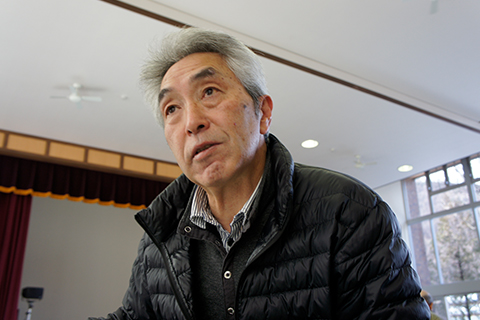
Ken’ichi Kubohata,the senior general manager of the NPO Kisogawa River Mizu no Shihatsueki and the manager of Mizukizawa Natural Forest
We interviewed Mr. Ken’ichi Kubohata. He is the senior general manager of the NPO Kisogawa River Mizu no Shihatsueki and the manager of Mizukizawa Natural Forest.
Around the year 1600, the Owari Domain felled and utilized a vast amount of trees. Since then, however, the forest has gone untouched and now the naturally-grown trees are all that remain. It is a completely natural forest,” said Mr. Kubohata.
“It is a national forest, where birds, insects, and animals live. We are putting in three walking trails now.
The trees are large, and visitors often tell us that the forest makes them feel alive. We are truly glad that so many people are moved.”
“Are there many large trees?”
“Many of the trees are several hundred years old. A gigantic hinoki cypress is 300 years old. It’s special. It’s cold in the forest, though. That’s why the trees in this forest grow slowly and have narrow rings. They are valuable.”
Mr. Kubohata showed us his photos.
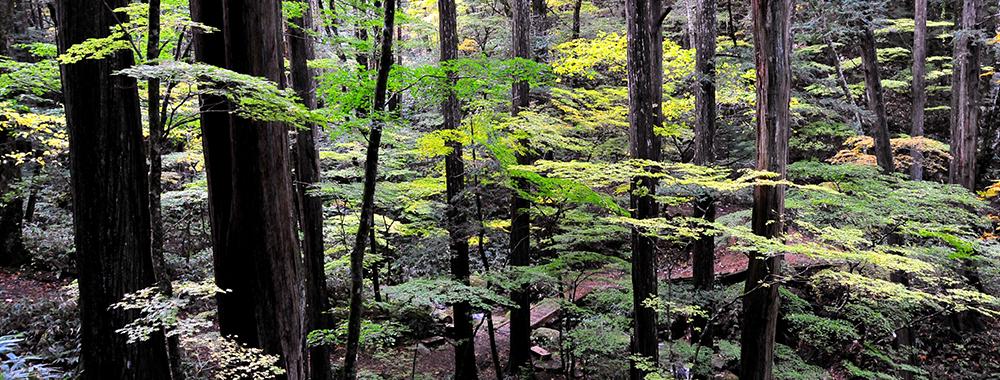
Mizukizawa Natural Forest in early autumn
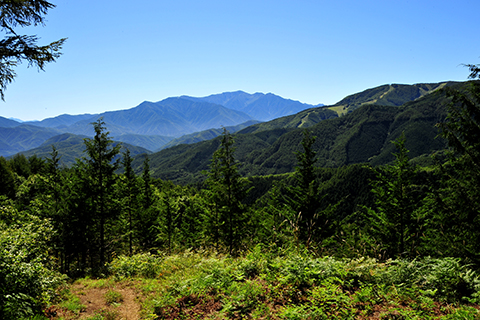
View from a platform
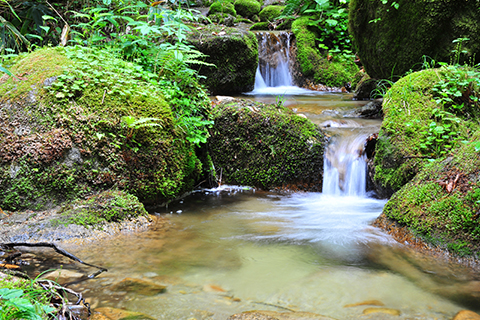
A clear stream
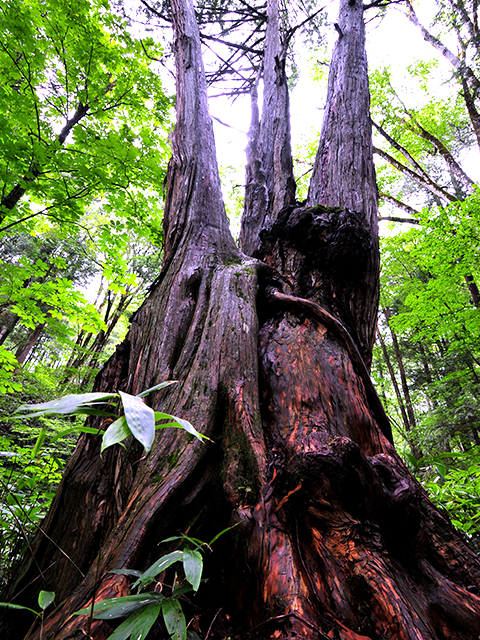
A gigantic hinoki cypress in the rain
“The water is clear, and there are wild mountain trout. You don’t see this much, do you?
In the mixed forest of broad-leaf and conifer, you can see how a tree with its roots raised above ground will come to function as a nurse log (*). That’s the natural cycle, pure and simple! It’s really something else.
It’s an entirely natural forest,” Mr. Kubohata shared with us.
Experts say Mizukizawa Natural Forest is a good example of a natural forest. We wish to preserve the forest and provide a place of healing for people.
We must not cut down trees. We must not plant trees. That’s the way we wish to preserve the forest.”
As we heard him speak, we could sense how he cherishes the forest.
*Nurse log: an old tree that has fallen and decomposes, providing for the next generation of trees.
Attractions
Mizukizawa Natural Forest is distinct for its mixture of conifer and broad-leaf trees that include 300-year-old Kiso-hinoki, sawara, beech, mizunara, and Japanese horse chestnut trees.
In Japan, forest’s are split into two distinct sections, evergreen forests and deciduous forests (leaves fall off in autumn). The former is found from the center of mainland Japan to Yakushima Island in the south sea, and the latter from the center of the mainland through Hokkaido. The Kiso Valley is on the border of these two sections, and it has so-called an intermediate-temperate forest. Most of the national forests are coniferous, but Mizukizawa has a mix of broad-leaf and conifer, which makes it special. It is a good example for future forest management.
Access
From the closest station & interchange
From Yabuhara Station on the JR Chuo Line
30 minutes by car
From the Ina Interchange on the Chuo Expressway
National road 361, 60 minutes by car
From the Shiojiri Interchange on Nagano Expressway
National road 19, 60 minutes by car
Address
Mizukizawa, Kiso Village, Kiso-gun, Nagano Prefecture